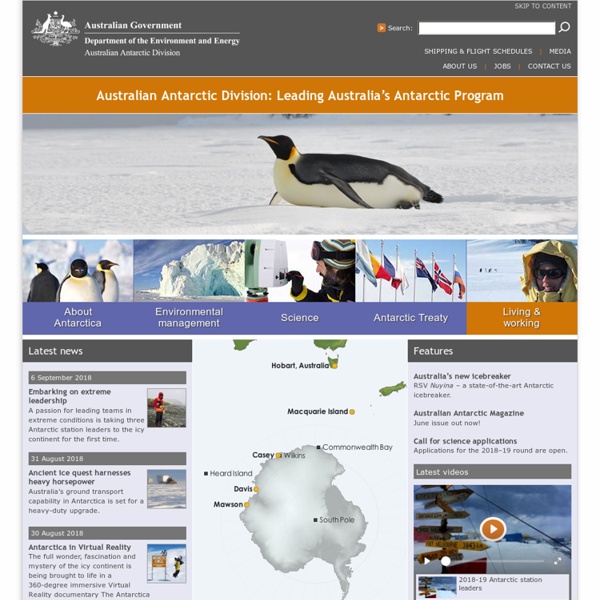



Antarctica Tours & Travel Top responsible travel tips for Antarctica 1. Don’t use aircraft, vessels, small boats, or other means of transport in ways that disturb wildlife, either at sea or on land. 2. Don’t feed, touch, or handle birds or seals or approach or photograph them in ways that cause them to alter their behavior. Special care is needed when animals are breeding or molting. My SmartRider TravelEasy is Transperth's free email update service. Registration is online, fast and simple. You can personalise your account to receive up-to-date public transport information, timetables and service changes delivered straight to your inbox. As soon as we know about changes to Transperth services, we'll let you know. Whether you're seeking information on how to get to a special event, or changes to timetables and services. To register, click on the 'Register' button on the right side of the screen and follow the registration prompts.
AIMS Home Antarctic Plants The Antarctic mainland is relatively poor in plant life, and the species that occur there have to survive extreme conditions on the very few ice-free pieces of land. There are no trees or shrubs in the Antarctic, and only two flowering plant species, the Antarctic hair grass (Deschampsia antarctica) and the Antarctic pearlwort (Colobanthus quitensis), which grow on the Antarctic Peninsula and some Antarctic islands (1) (3). Visit Antarctica - Discovering Antarctica Why are more people able to visit Antarctica? We have already seen why people want to visit Antarctica for example its unique beauty and wildlife is appealing to people. But why are more people able to visit Antarctica? Study the transcript, data and graphs showing some of the different reasons why it is much easier to visit Antarctica than in the past. Make notes why travelling to Antarctica is now possible.
Western Australia, Swan River - Barry Lawrence Ruderman Antique Maps Inc. Title: Western Australia, Swan River Map Maker: John Tallis Description: Gorgeous full color example of this decorative map, extending from Champion Bay to Doubtful Island Bay and colored by counties.
Welcome to the Commonwealth Scientific and Industrial Research Organisation (CSIRO) Tourism in Antarctica: A Growing Industry - Antarctica Guide Tourism in Antarctica has risen dramatically over the past decade. Initially discovered and visited for research purposes and the whaling industry, the white continent is now a popular tourist destination. This page provides a wealth of information on tourism in Antarctica and the changes over time that the Antarctica tourism industry has witnessed. Beginning in the late 1950s, tourism in Antarctica supposedly began when 500 passengers paid to be taken to the South Shetland Islands. This idea of expedition cruises with an educational purpose was continued when Lars-Eric Lindblad then guided a traveller’s expedition to Antarctica in 1966. Sea tourism in Antarctica was the predominant way to see the Antarctic Peninsula throughout the 1960s.
Antarctic animals adapting to the cold Antarctic animals are exposed to some of the coldest environments on earth. Animals survive in these harsh conditions by reducing the percentage of body heat that is lost to the environment. This can be by physical means (generally evolved over many generations) or patterns of behaviour.
Printables - 15,000+ Resources & Printable Worksheets from Scholastic Responsible tourism in Antarctica When it comes to responsible tourism in Antarctica, many environmentalists would argue that the only truly green course of action is... not to go. In many long-haul destinations, responsible tourism can play a huge role in community development and conservation which we believe offsets the environmental cost of flying – but with no permanent inhabitants, this is not the case in Antarctica. So – how can the flight be justified? Although activities south of the polar circle are highly regulated, Antarctica remains at the mercy of activities taking place thousands of miles to the north. Climate change is without doubt the biggest threat facing Antarctica; temperatures have risen here much faster than across the rest of the globe – by almost 3°C in just 50 years.
Cool Antarctica, pictures of Antarctica, facts and travel guide Dress Code Guide Cool Antarctica, pictures of Antarctica, facts and travel guide